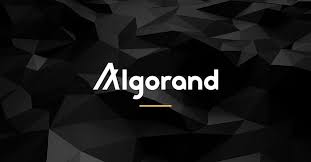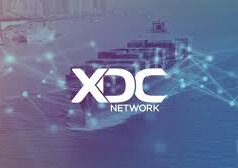In the crowded world of blockchains, Algorand stands out as a platform that’s quietly but confidently carving its niche. Launched in 2019 by MIT professor and Turing Award winner Silvio Micali, Algorand is designed to solve the blockchain trilemma—balancing speed, security, and decentralization—while prioritizing sustainability and real-world utility. With its unique Pure Proof-of-Stake (PPoS) consensus mechanism and a growing ecosystem of decentralized applications (dApps), Algorand is positioning itself as a go-to platform for everything from DeFi to tokenized assets. Let’s explore what makes Algorand tick, how it’s evolving, and why it’s worth paying attention to.
The Genius Behind Algorand’s Design
At its core, Algorand is built to be fast, secure, and accessible. Unlike Bitcoin’s energy-intensive proof-of-work or Ethereum’s (pre-Merge) gas fee headaches, Algorand’s Pure Proof-of-Stake mechanism randomly selects validators from all token holders, weighted by their stake. This eliminates mining, slashes energy use, and ensures anyone with ALGO tokens can participate in securing the network. The result? Transactions finalize in about 4 seconds, with fees often less than a cent—numbers that make Algorand a serious contender for real-world applications.
Micali’s vision was to create a blockchain that’s both democratic and efficient. PPoS achieves this by avoiding the centralization risks of delegated proof-of-stake systems, where a small group of validators can dominate. Instead, Algorand’s randomization ensures no single entity controls the network, while still processing up to 6,000 transactions per second (TPS) today, with plans to hit 10,000 TPS soon. Compare that to Ethereum’s 15–30 TPS or Bitcoin’s 7 TPS, and you see why Algorand is turning heads.
A Green Blockchain for a Modern World
Sustainability is a cornerstone of Algorand’s identity. While Bitcoin’s energy consumption rivals that of small countries, Algorand is carbon-negative, offsetting its minimal footprint through partnerships like ClimateTrade. This matters not just for optics but for adoption—corporations and governments increasingly demand eco-friendly tech. In 2023, Algorand processed 1.2 billion transactions with the energy equivalent of powering a few households, a stark contrast to Ethereum’s pre-Merge days.
This green ethos extends to Algorand’s partnerships. For example, it’s powering climate-focused projects like PlanetWatch, which uses IoT sensors to monitor air quality and rewards users with ALGO tokens. These initiatives show Algorand isn’t just about finance—it’s about building a blockchain that aligns with global priorities like sustainability and transparency.
Powering Real-World Use Cases
Algorand’s low fees and high throughput make it a natural fit for practical applications. Its ecosystem spans DeFi, NFTs, and tokenized real-world assets (RWAs). Take Lofty, a platform that lets users invest in fractionalized real estate with as little as $50—Algorand’s speed and affordability make this possible. Or consider Folks Finance, a DeFi protocol offering lending and borrowing with seamless UX, rivaling traditional finance apps. These projects thrive because Algorand’s Layer 1 handles complex smart contracts natively, unlike Ethereum, which often relies on Layer 2 solutions.
Governments are also taking note. The Marshall Islands chose Algorand to launch its digital currency, SOV, due to its security and scalability. In Italy, Algorand powers SIAchain, a blockchain for financial institutions, handling tokenized bonds and digital assets. These use cases highlight Algorand’s versatility—it’s not just a crypto playground but a platform for institutional-grade solutions.
The Developer-Friendly Ecosystem
Algorand’s developer experience is another strength. Its smart contract language, TEAL, is designed for simplicity and security, with formal verification to catch bugs before they become exploits. Developers can use Python-based tools like PyTeal, lowering the barrier to entry compared to Ethereum’s Solidity. The Algorand Virtual Machine (AVM) supports complex dApps without the gas wars that plague other chains, making it a haven for builders.
The Algorand Foundation’s grant program further fuels innovation, funding projects from NFT marketplaces to cross-chain bridges. In 2024, Algorand allocated $50 million to support DeFi and RWA projects, attracting developers from Ethereum and Solana. The result is a growing ecosystem—over 2,000 dApps by mid-2025, up from 500 two years ago, according to DappRadar. While still smaller than Ethereum’s, Algorand’s focus on usability is closing the gap.
Challenges on the Horizon
No blockchain is without hurdles, and Algorand faces its share. Its native token, ALGO, has struggled with price performance, trading at around $0.14 in July 2025, down from its 2021 peak of $2.38. This reflects broader market dynamics but also investor skepticism about Algorand’s ability to compete with giants like Ethereum or high-speed chains like Solana. Marketing has been another weak spot—the platform’s technical prowess often overshadows its storytelling, leaving it less hyped than flashier competitors.
Adoption is another challenge. While Algorand’s tech is robust, its ecosystem is still young compared to Ethereum’s sprawling DeFi and NFT markets. To catch up, Algorand needs more marquee projects and broader retail awareness. The Foundation’s push into RWAs and partnerships with institutions like BlackRock for tokenized funds is a step in the right direction, but scaling adoption will take time.
The Road Ahead for Algorand
Algorand’s roadmap is ambitious. By 2026, it aims to boost TPS to 10,000 through sharding and optimize PPoS for even faster finality. The upcoming AlgoKit 2.0, a developer toolkit, will streamline dApp creation, while cross-chain bridges like Algorand’s Wormhole integration will enhance interoperability with Ethereum and Solana. These upgrades could make Algorand a hub for multi-chain DeFi and asset tokenization.
The Foundation is also doubling down on global outreach. Events like Decipher 2025 in Singapore aim to showcase Algorand’s real-world impact, from supply chain tracking to digital identity. With $300 million in funding for ecosystem growth, Algorand is betting on developers and institutions to drive adoption.
Why Algorand Deserves Your Attention
Algorand isn’t the loudest blockchain, but it’s one of the most promising. Its blend of speed, security, and sustainability makes it a strong contender for the future of decentralized tech. Whether you’re a developer looking for a reliable platform, an investor eyeing tokenized assets, or a user fed up with high fees, Algorand offers something compelling. It’s not trying to be Ethereum or Bitcoin—it’s carving a unique path, one that prioritizes practicality over hype.
As the blockchain space evolves, Algorand’s focus on real-world solutions and green tech could give it an edge. It’s already powering projects that touch millions, from digital currencies to climate initiatives. With a clear vision and a relentless focus on innovation, Algorand is poised to be a cornerstone of the decentralized future. Keep an eye on this one—it’s just getting started.




























The Intermezzo launch—WorldChess’s loyalty program sounds like a cool use case
It’s exciting to see a blockchain prioritizing real-world use cases like tokenized finance and self-sovereign identity
Algorand’s already making waves in Asia also.